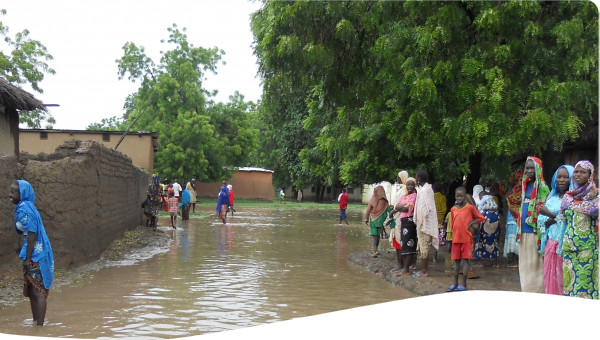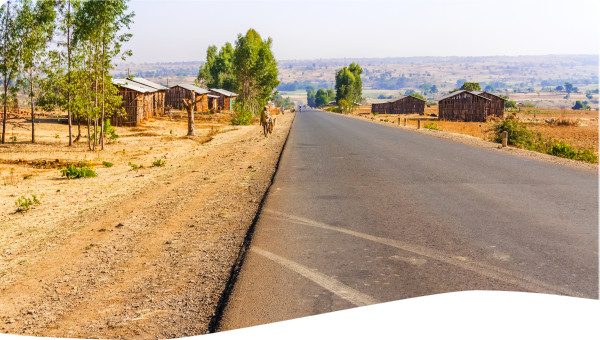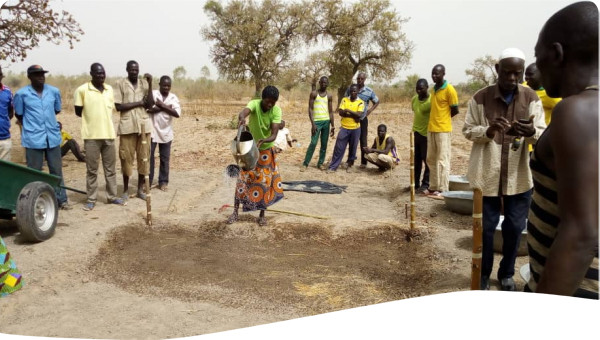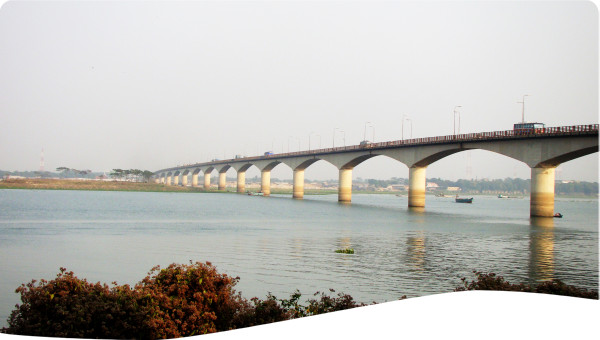 Tool -
Tool -
Pressure on water systems from desertification and groundwater extraction, as well as increasing drought, saltwater intrusion, and shifts in rainfall patterns, pose a threat to water supplies, especially in already water-scarce regions. This puts the basis for human life, agriculture, livestock, and industry at risk. Between 2.7 to 3.2 billion people will be affected by droughts in 2050 compared to 1.9 in the early to mid-2010s (UN, 2020) and their close succession plunges many households further into poverty. The decline of the agricultural sector will lead to precarious food and economic situations for women and men, especially in areas where rainfed agriculture is prevalent.
Agricultural crises hit women particularly strongly. In most developing countries, women are the main contributors to household food production and represent a significant proportion of the agricultural labour force. Women predominantly lack access to employment outside agriculture and are often subject to laws that restrict their right to own assets. This dependence on natural resources makes water a critical resource for them and their families’ livelihoods – both in terms of subsistence farming and as the sole source of income. Water shortages increase both the time and effort required to collect water and wood from further distances, which increases the work burden and negatively impacts women's ability to participate in society and economy. The increasing reliance on private water sources also increases the strain from a financial point of view.
Flooding and landslides become more likely due to more extreme weather patterns caused by climate change. Heavier precipitation, more frequent hurricanes, or rising sea levels all increase flood risk. The number of people threatened by floods will be at 1.6 billion in 2050 (UN, 2021). Insufficient or missing structural measures such as drainage or embankments amplify this. Poor countries are particularly vulnerable to these climate-induced risks in terms of existential threats, deaths, and personal hardship (Germanwatch, 2021). Destruction of homes and infrastructure, loss of crops, livestock and seeds, reduced soil fertility and destroyed feeding resources that limit agricultural production are among the far-reaching consequences of climate-induced natural disasters.
The probability for women and children to die during disaster is 14 times higher than for men (UNDP, 2013). This is the case, among other things, due to the fact that women are less connected to early warning systems, are in some instances not allowed to move freely without a man’s company, or are not able to swim. Additionally, women are more exposed to sexual and domestic violence which increases after disasters and in emergency contexts. Eighty percent of people affected by climate-change induced displacement are women (UNDP, 2016). Flooding and other extreme climate change-related disasters often destroy water points as well as sanitation and hygiene structures, resulting in contaminated water and water-associated diseases which especially impact women and girls due to care responsibilities such as washing and water fetching. With regards to food security, women and girls are more affected by climate triggered food crises, as they suffer more quickly from malnourishment.
Adaptation is commonly described as the process of strengthening the ability of societies to adjust to the effects of changing climatic phenomena to mitigate adverse effects in a way that can maintain livelihoods, harness new opportunities, and safeguard or ameliorate material wellbeing and social identity. The Paris Agreement on climate change contains provisions that call for nations to take action to ensure that all populations are equally protected, including ensuring that vulnerable groups receive additional help.
Case studies and evidence show that valuing women’s knowledge and experience creates co-benefits for all of society when gender lens is integrated to applying an IWRM approach to climate change adaptation activities. It leads to more fruitful and equitable adaptation – not only within the targeted sector – and more substantial reductions in vulnerability. While investing in women brings economic returns, the promotion of women’s agency, equal voice, and their right to meaningful participation in decision-making should be at the heart of climate change adaptation projects and programmes.
Several practical guides and handbooks have been developed to help integrate gender into water and climate change adaptation action, including:
- Training Manual on Gender and Climate Change (Aguilar, 2009) targets policy and decision makers aiming to increase their capacity to ensure gender-sensitive approaches to climate change mitigation and adaptation. The comprehensive tool comprises seven modules. Each module explains in detail what the key messages and concepts are, how gender plays a role in this, and provides case studies, instruments, and techniques on how to tackle the issue oneself. The manual is not specifically tailored to the water sector, but comprehensively covers all climate change relevant sectors.
- Toolkit for a Gender-Responsive Process to Formulate and Implement National Adaptation Plans (NAPs) (Dazé and Church, 2019) aims to support government actors with integrating gender considerations in the NAP process as well as other stakeholders and partners during the adaptation planning and implementation phase. It is a supplement to the UNFCCC technical guidelines for the NAP process and can be used regardless of where a country is in the NAP process. The toolkit covers six ‘enabling activities’ areas: Establishing institutional arrangements; capacity development; stakeholder engagement; integrating adaptation in budgets; securing finance from international sources; information sharing.
- Pacific Gender & Climate Change Toolkit (Vunisea et al., 2016) is aimed at practitioners from national governments, NGOs, regional and international organization who are seeking support to include gender into all phases of the climate change policy, programme and project cycle. Introductory modules provide an overview of the phases needed to mainstream gender both in programmes and policies as well as in higher-level governance processes. Sector specific modules have been prepared in a very practical and accessible way are guiding the user through the application of a gender lens to these climate-sensitive development sectors. Case studies, checklists, and tools were designed to help with the practical implementation.






